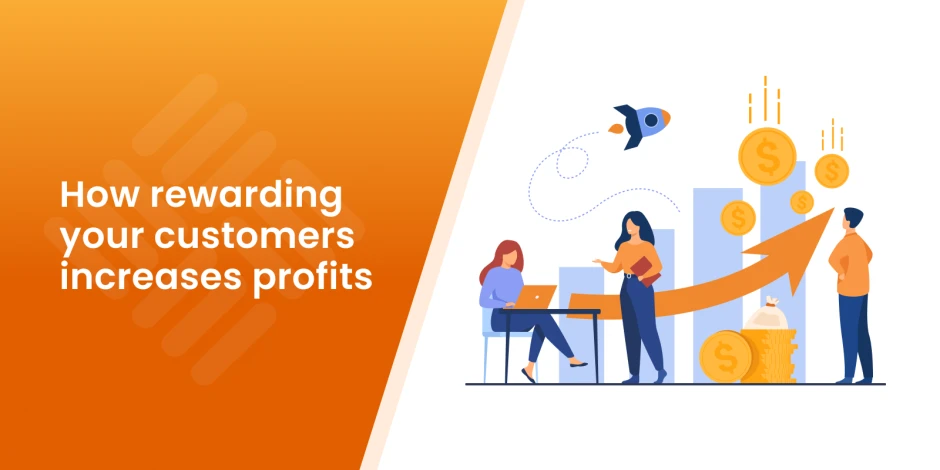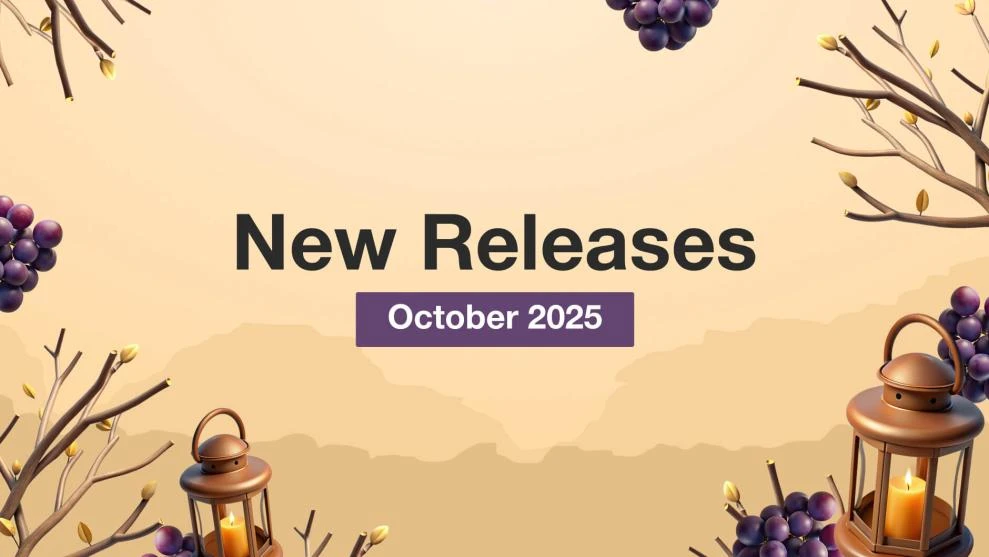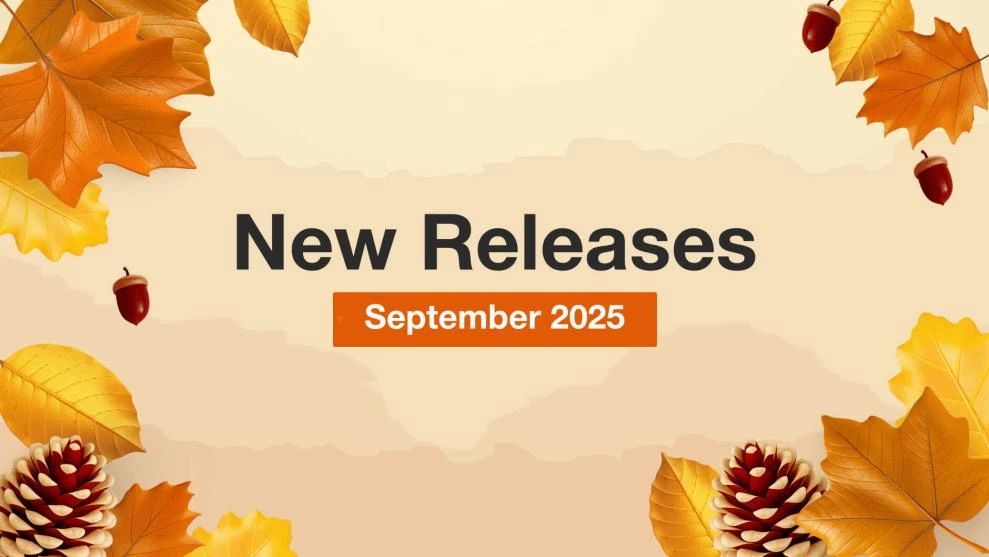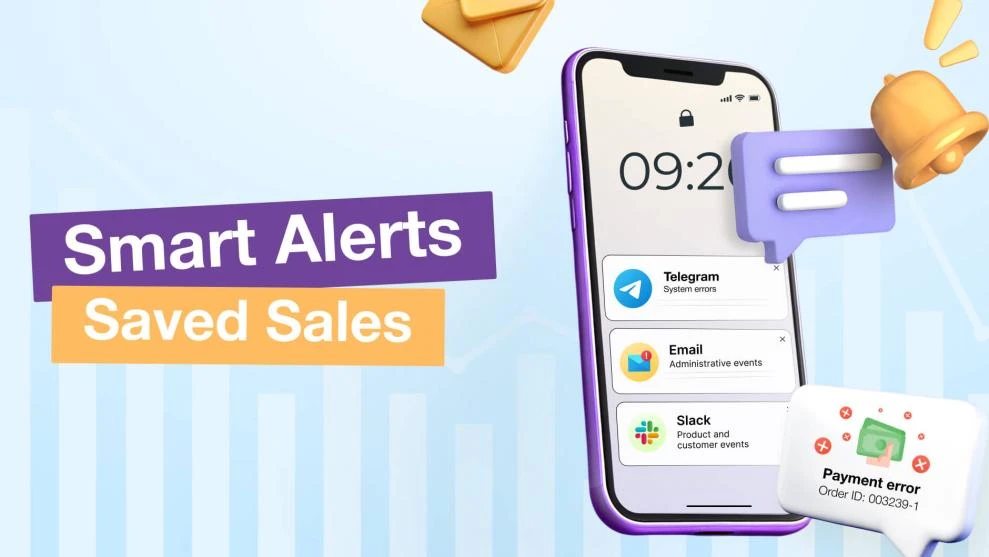How rewarding your customers increases profits: 5 research-based facts on loyalty programs
-
 Eugen Barilyuk
Eugen Barilyuk
- Magento 2
- 7 min read
Did you know that the second most valuable thing to customers in their shopping experience is the reward a shop gives them? Earning rewards or loyalty points is considered one of the top-valued aspects of the retail shopping experience. Only quick and easy checkout is more important to customers.
The concept of loyalty programs has existed for decades. Stores encourage repeat purchases and create brand advocates by giving rewards to customers. But, more than half of businesses are missing out on reward and loyalty programs.
This raises some questions. Do loyalty programs really work? What impact do they have on customer retention? Here are 5 research-based answers to those questions.
1. Users make purchases to get a reward
The average consumer participates in 14.8 loyalty programs, with 6.7 actively used.

This is quite understandable: who doesn’t want to get more for their money? But reward points became more than that – they now are the driving force to making purchases.
Roughly 91.9% of global shoppers make purchases to earn loyalty rewards. At least 35.3% of users base purchasing decisions half the time on the loyalty rewards they receive.
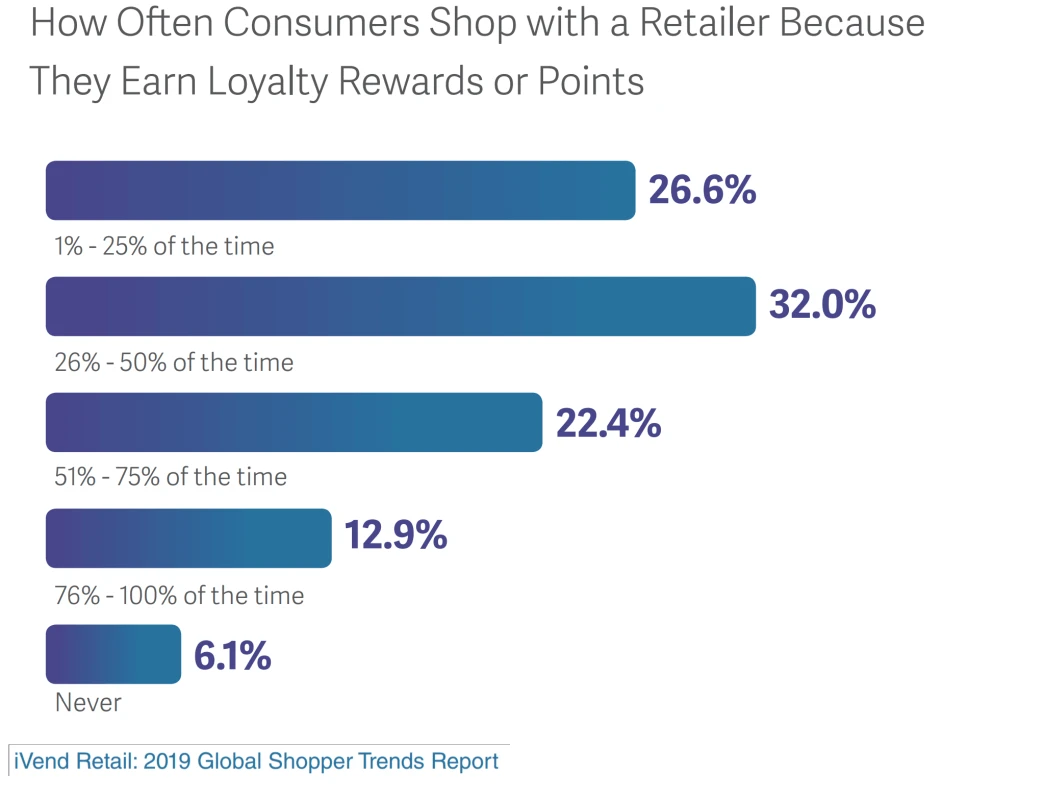
This trend for value increase of loyalty points has been getting stronger in recent years. Research shows a rise of about 17% year over year.
So why have loyalty rewards become a thing that influences the purchase decision?
Roughly 37.3% of customers say that they use rewards to access exclusive product updates. Almost 26.7% enjoy the benefits of getting access to VIP events. And 21.3% say that loyalty reward programs are just fun.
By the way, when communicating with your customers, offer a personal bonus to them. Almost 94% of global consumers prefer personalized communications, and 68.8% like the ability to earn loyalty points and rewards.
At least 61% of consumers say that the most important way a brand can interact with them is surprise gifts and offers. And 87% are willing to open their activity details in exchange for more personalized rewards.
2. Bet on referrals
Referrals are well-known ways to increase sales because a positive recommendation from a customer to their friends is the most trusted advertisement. 84% of people trust recommendations from people they know.
The global referral rate is about 2.3%. That means each referral gives you about 1 out of every 50 sales; in other words, you expect an increase in sales by about 2%.
The loyalty program of your store can increase the number of referrals. Good benefits from the reward program increase the likelihood of recommending or discussing the program on social media. More than 70% of consumers are more likely to recommend a brand if it has a good loyalty program.
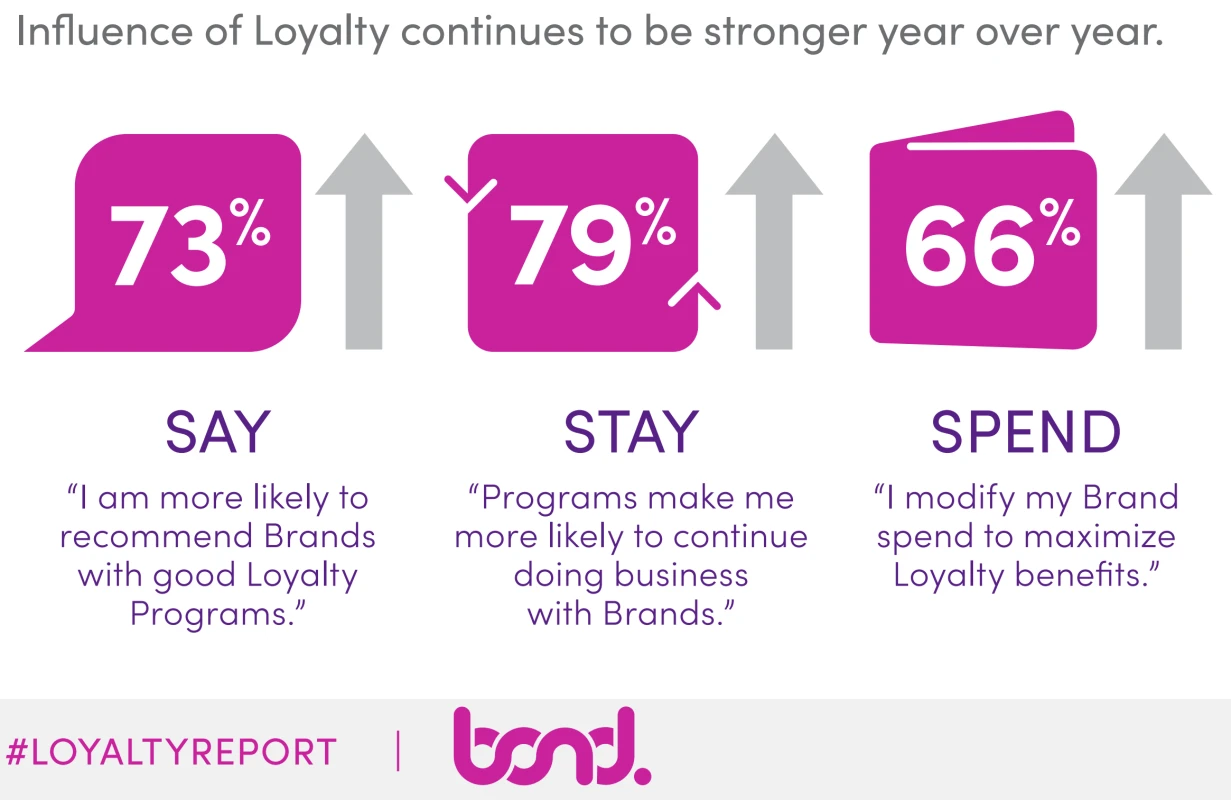
3. Rewards should be flexible
While discounts will always be a key factor, loyal customers want more flexibility and interest in getting them. Nearly 38% of shoppers name it as the loyalty program pain point. They don’t want to earn points only by making a purchase.
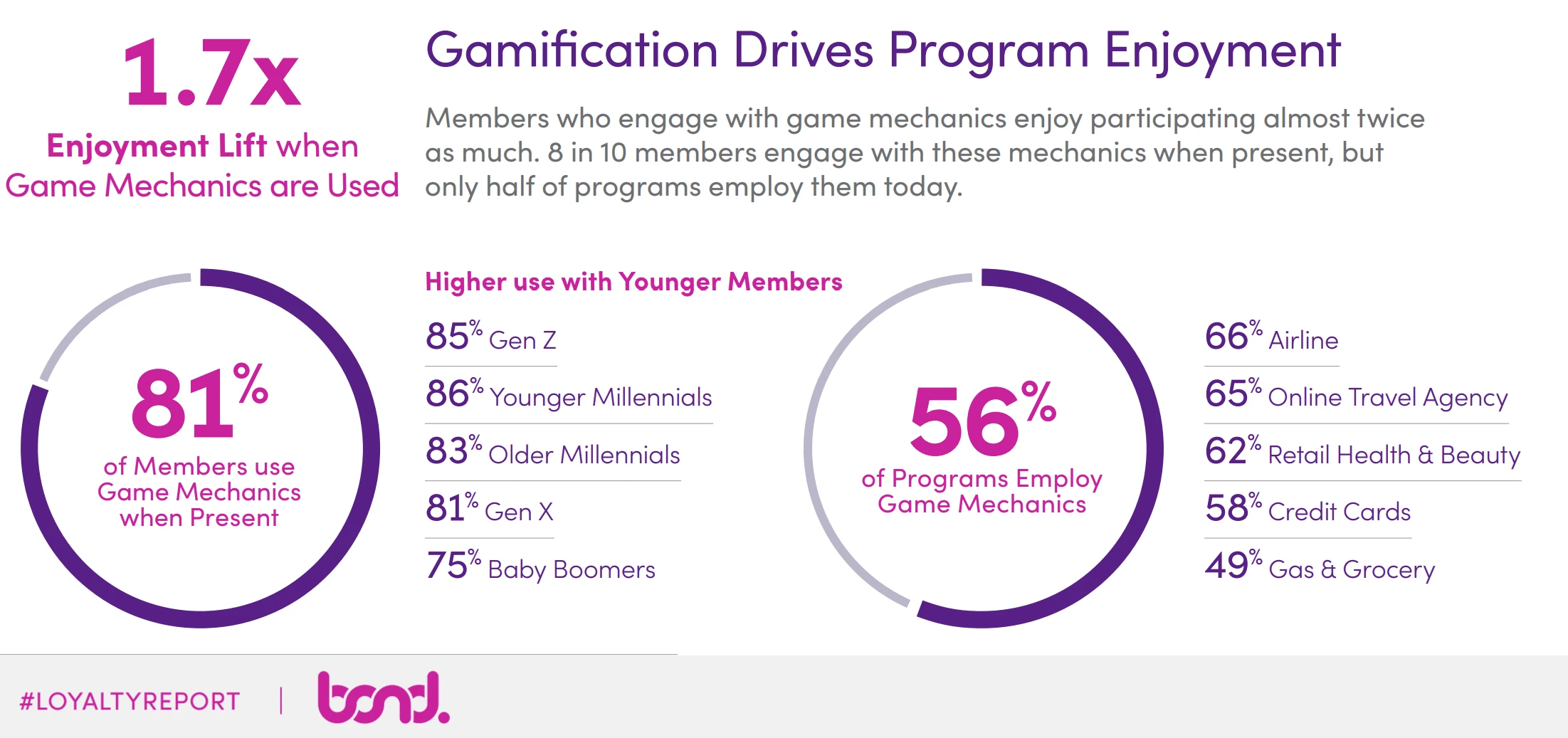
A good solution can be gamification of the reward points. Almost 53% of consumers are interested in such activity when using loyalty programs.
Also, give your customers more time to use their earned points and discounts. A 31% of shoppers say their main problem with loyalty programs is the expiration of earned points before they get the opportunity to use them.
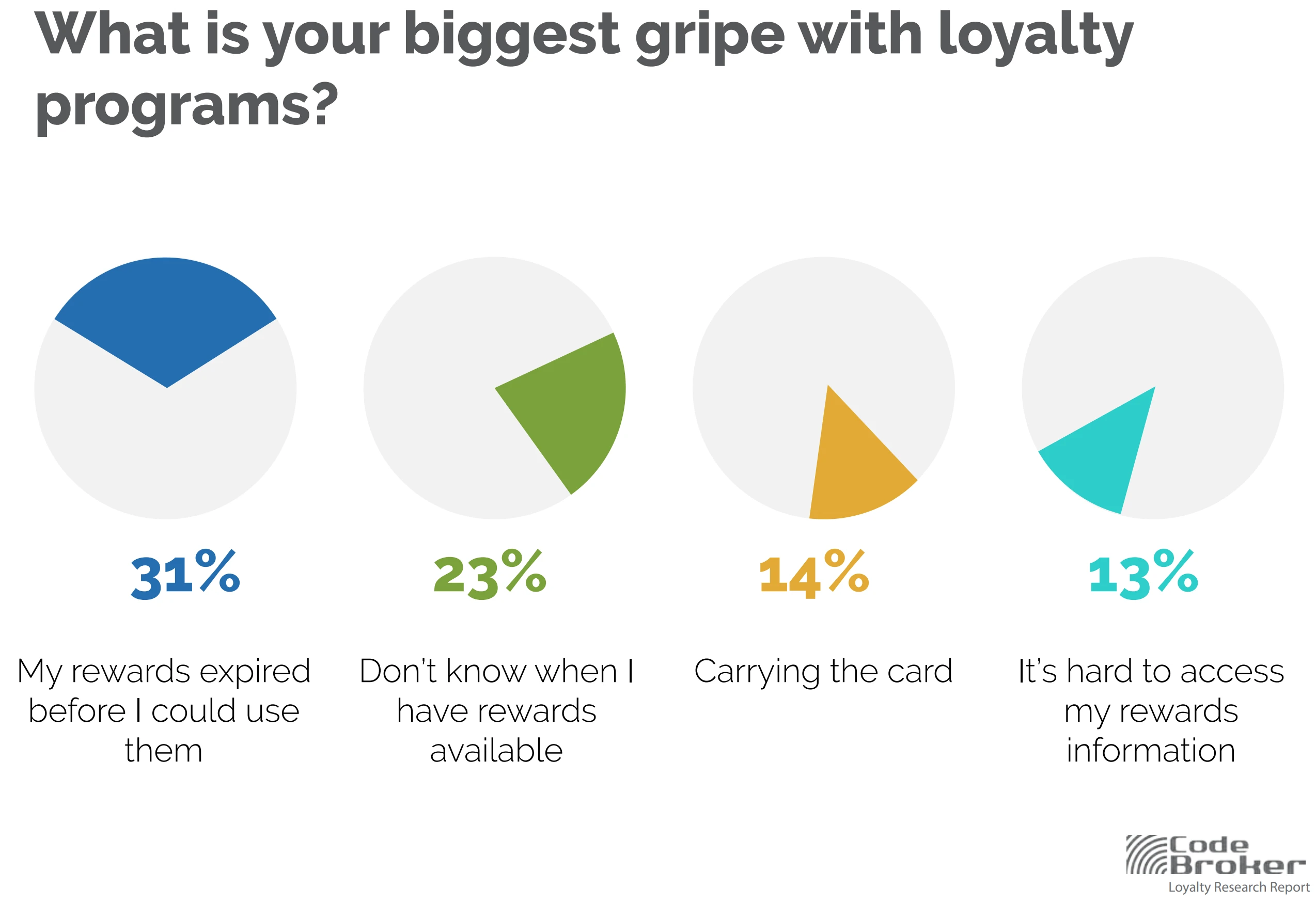
A shopper’s satisfaction with a loyalty program is connected to its usage frequency.
4. Huge rewards aren’t better.
New technologies and services present many variants for awarding loyal customers. And there is a misconception that very expensive bonuses play a bigger role than more affordable ones. Higher value prizes cost more, yet they do not give a proportional increase in customer participation.
This participation seems to be more interesting to customers, as they will be almost equally in the drawing for the $100,000 and $1 million grand prizes.
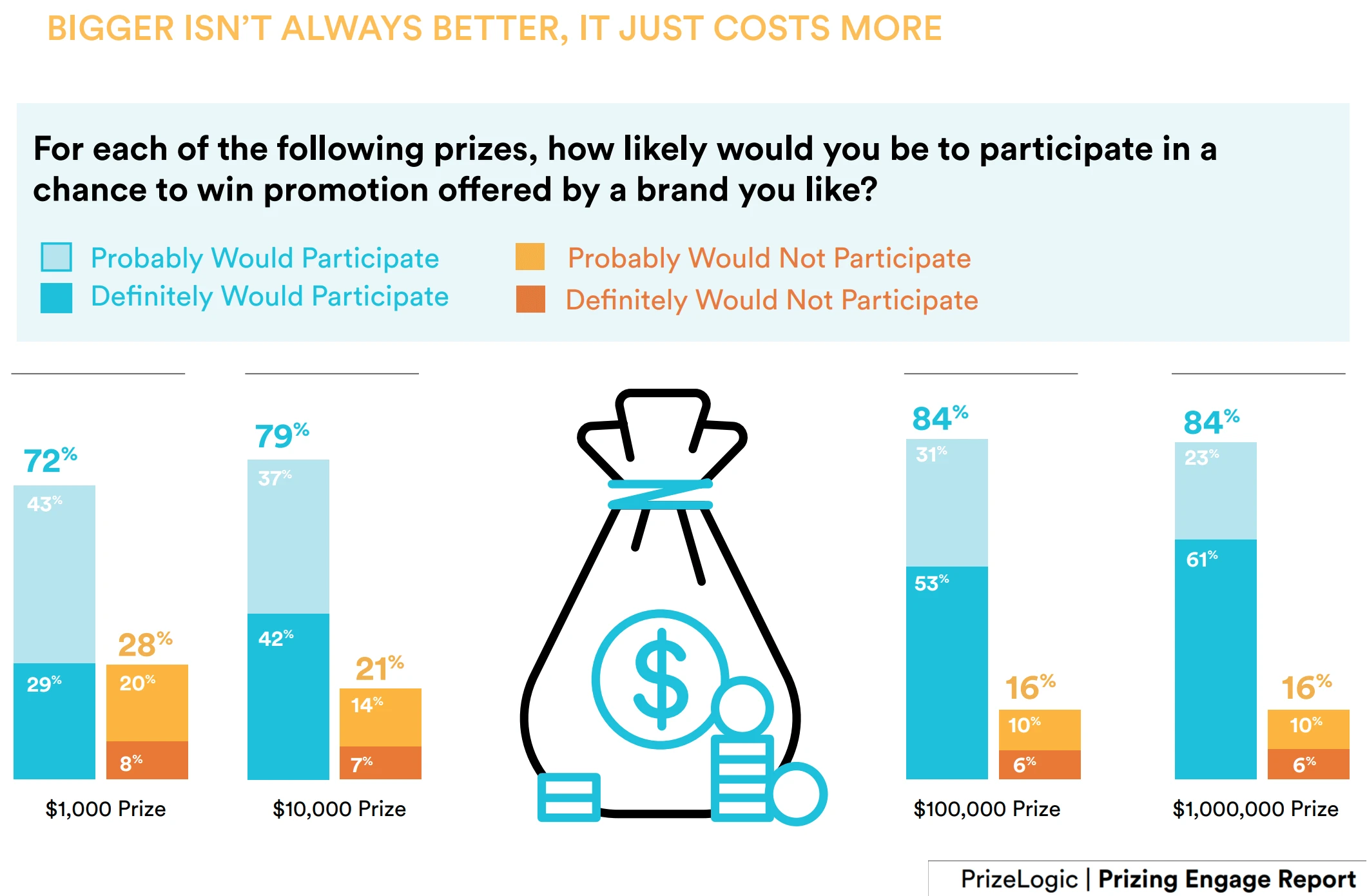
When considering promotional goals and creating a reward pool focusing on ROI, it may be better to reduce the reward budget. Reinvesting the costs into marketing can be a wiser strategy.
5. Customers want more than money
When you reward customers with loyalty points, they reward you with increased income. A McKinsey survey on loyalty programs shows that members of loyalty programs spend somewhat 30% more. And those customers who pay for the loyalty program memberships spend up to 60% more.
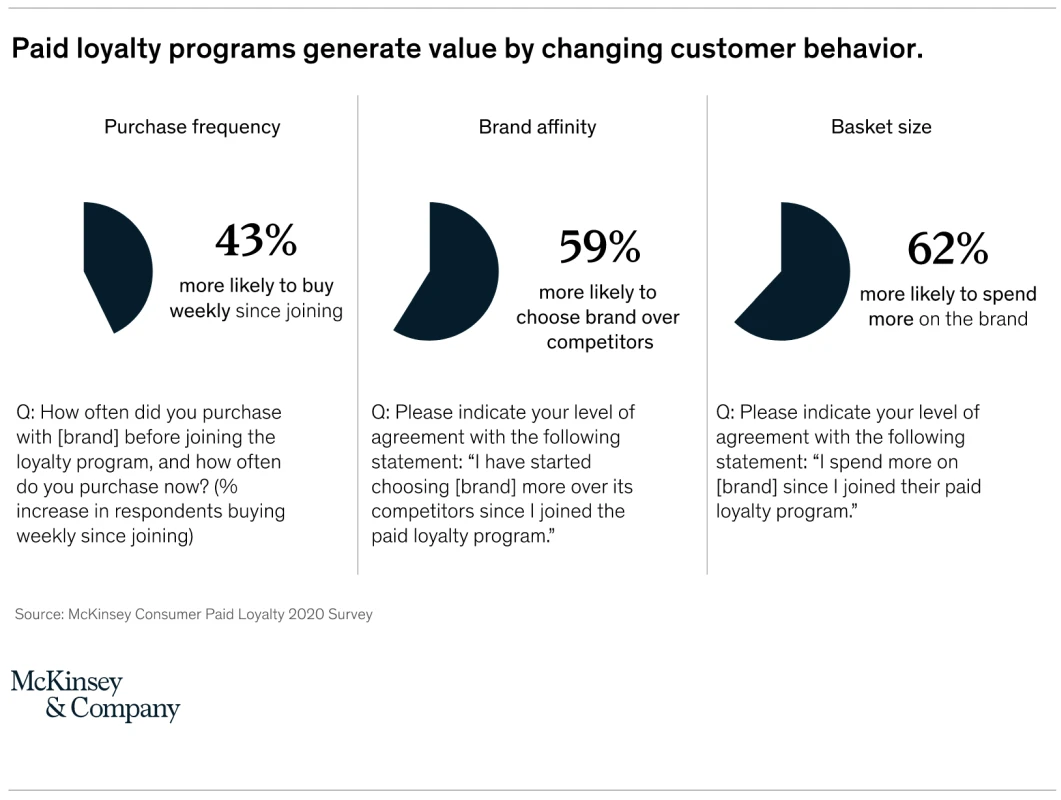
Almost 43% of members in paid rewards programs are likely to make weekly purchases after joining. One of the reasons for that – members of the paid program can get more valuable rewards.
By the way, paid loyalty programs have gained popularity since paying members can be worth several times more than nonpaying. Of course, that’s not counting the paid loyalty program membership revenue.
Such paid reward programs are not a niche trend - roughly 63% percent of consumers participate at least in one. Globally, they spent $25 to $30 billion on paid loyalty programs in 2019. That’s a 25 to 50 percent growth compared to the previous year.
Conventional pure discount-based programs, which are also known as “earn and burn”, are no longer enough. There is a shift from simple reward points toward additional experiences and services.
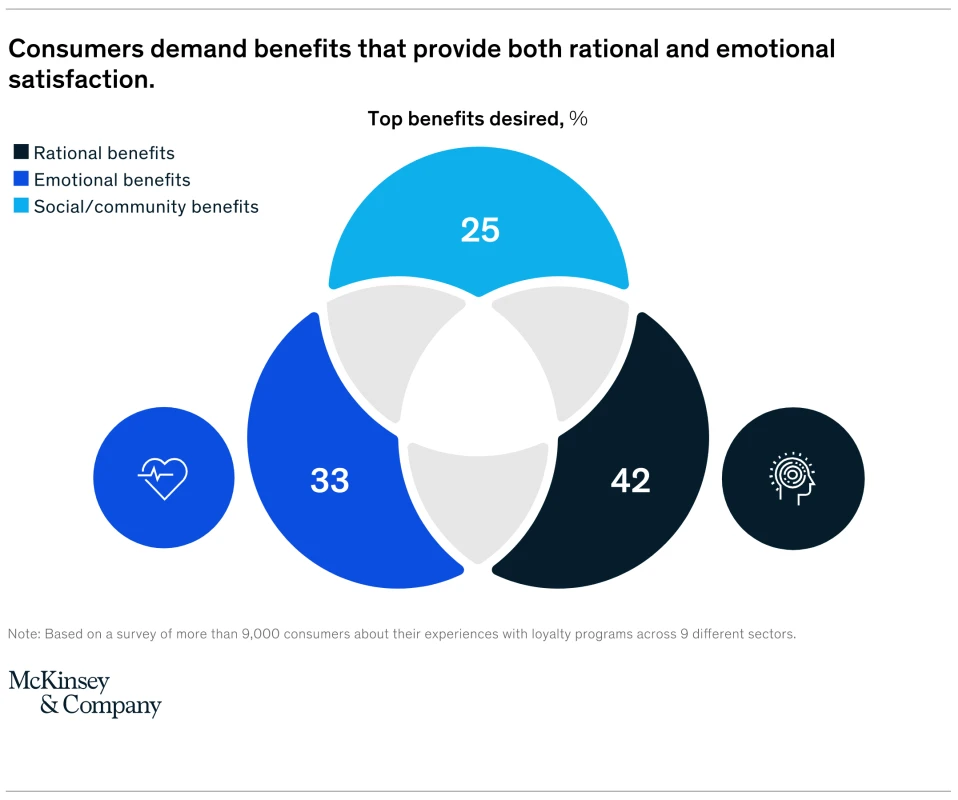
The optimal strategy here is to balance monetary and experiential rewards.
Integrate referral and loyalty programs into your store
A default Magento includes neither loyalty nor a referral program. However, as a Magento store owner, you can propose to your customers a loyalty and referral program that offers them benefits and makes them interested in participating in using extension Rewards Points.
This module is both a comprehensive loyalty program and a fully-featured referral program. Its flexible reward system allows you to give customers reward points for a wide variety of events.
Reward Points extension has a Custom Behaviour Event feature, which allows creating your own triggers for earning points with minimum coding requirements. With such extensive customization opportunities, your loyalty program is mostly limited by your imagination.
Gamification is also an option with the Reward Points extension. Split your program into an unlimited number of tiers, and it becomes a game of completing the full tier list. Add unique benefits to the higher tiers to make the game more engaging to customers.

With the Reward Points module, you get a fully-featured referral program at no extra cost. It gives benefits for the referrers and for the referred, so everyone is interested in participation.
You can also get referrals outside the circle of your customers' friends and relatives. Get a fully-featured affiliate program in your store with the Affiliate extension.
This extension gives you 4 types of promotion programs and 4 options for referral acquisition. And the program participants can quickly withdraw their earnings.
It allows you to push your reward policy even further than you can imagine.
Summary
A good loyalty program is a direct way to raise sales. About 73% of consumers would recommend a brand with a good loyalty program. And such a program can increase the average order quantity by 319% for an e-commerce shop. Most engaging loyalty programs can lead to 2.5x faster revenue growth.
Modern loyalty programs have become more than just random bonuses; they are now all about the emotional connection with customers. Members of loyalty programs spend 27% more when such a connection is established.
Loyalty programs require a bit of planning and work, but they are certainly worth the effort as they boost customer retention and increase profits. And if you want tips on transforming loyal customers into brand advocates, read this article.

